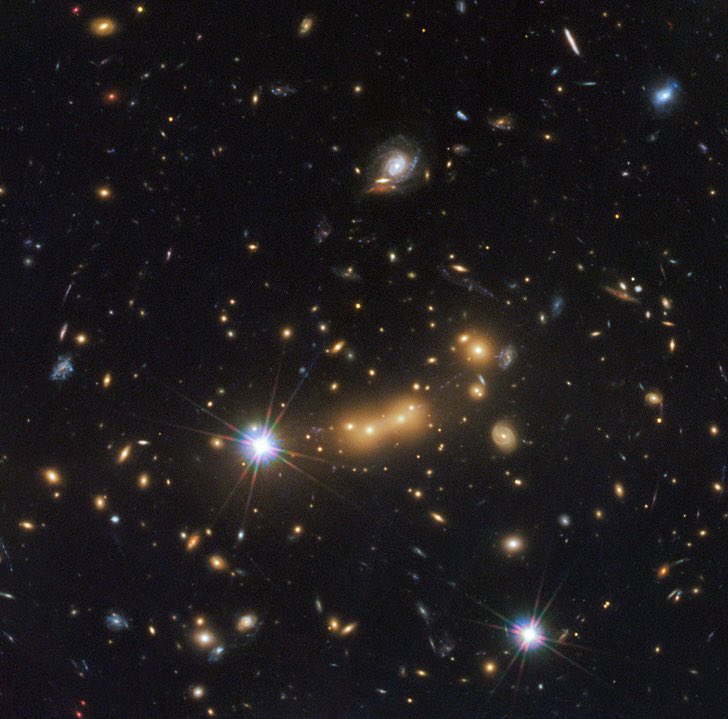

And recall that the imaging sensor actually outputs grayscale only, it is the filters that give it a color view and individual images in each filter are assembled to create a color composite.Īccording to an example science program designed to take such images, the filters selected to be imaged might be 900nm, 1150nm, 1500nm. Researchers choose which filters to use based on what they wish to study. The imaging filters available on the NIRCam span 900nm to 4400nm (4.4 micron) and there are 29 of them. Secondly, if it were remapped especially for the galaxy cluster of interest in this image, I don't think the colors are specifically tuned for that either.Ĭonsider the optical color spectrum we see, ROYGBIV, or let me reverse it in order of increasing wavelength VIBGYOR - and take the "RGB" 3 colors that might make up an image, or BGR to use that ordering - this spans a wavelength range of say 400nm, 600nm, 800nm. For the galaxies near us in the image (z=0), the wavelengths being converted to RGB don't correspond to what we would see in the optical. So regardless of what color mapping you chose, it would not be a perfect fit for all objects in the field of view. For example there may be galaxies quite near us (redshift z = 0 or close to 0) while others are more distant (the arced galaxies in the image being lensed that this image is famous for, at redshift z = 0.39), where redshift is the measure (1+z) of how much the wavelength light has been multiplied. I do not think the colors do correspond (at least not deliberately), for 2 reasons:įirst is that the image of the Deep Field ("SMACS") contains galaxies at a range of redshifts. They did not release or talk in much technical detail of how the images were assembled, which I'm sure will be done at some point. Hey, that's an interesting and uncommon question that I had not seen elsewhere. I just write to point out that for the most headline-grabbing images and newspaper writers, the sharpness of the images over the actual IR frontier is what grabs the attention. And of course many here are technically knowledgeable about the IR aspect. And thank god we have a scientific field where stunning images was enough to get the public to support a $10B project.Įdit to add: I did not mean to detract from or diminish anyone's appreciation of the images and accomplishment at whatever level they are enjoyed. But everyone can easily appreciate a sharper image.Īnyway, still a momentous achievement. And the general public knows little about that detail's importance, especially since the images are stylized / colored anyway to look just like RGB images that we are so familiar with.

The new thing is observations in the IR, which is somewhat a technical footnote in many gushing announcements of these images (or some discussion here too). Yes it is sharper/higher resolution, but that wasn't the key selling point. But anyway, the resolution of the images is often not what really is the limiting factor for photometric observations. Ok, the much larger mirror is an achievement. HST might have done that if its instruments had been of different pixel size or imaging array size / focal length. People seem most impressed by the apparent increase in resolution of the images, which is not from a certain point of view the hardest thing to do.
HUBBLE DIFFRACTION SPIKES PROFESSIONAL
For the professional (or former professional) astronomers among us, I will make my somewhat amused observation that what people are most paying attention to is not really the distinguishing features of JWST.


 0 kommentar(er)
0 kommentar(er)
